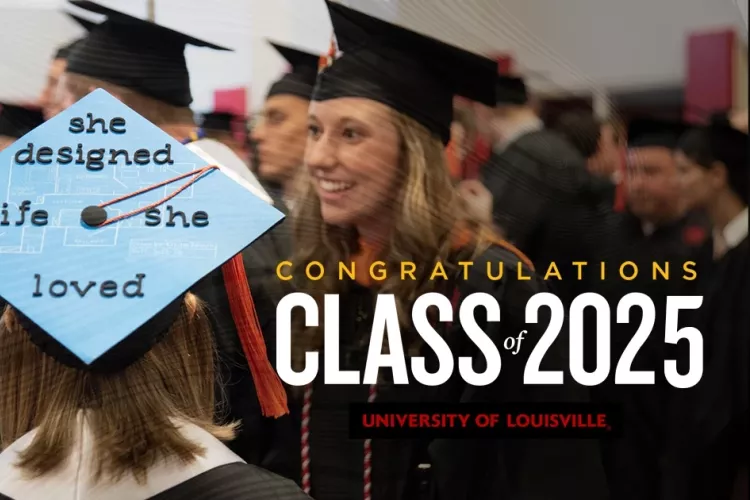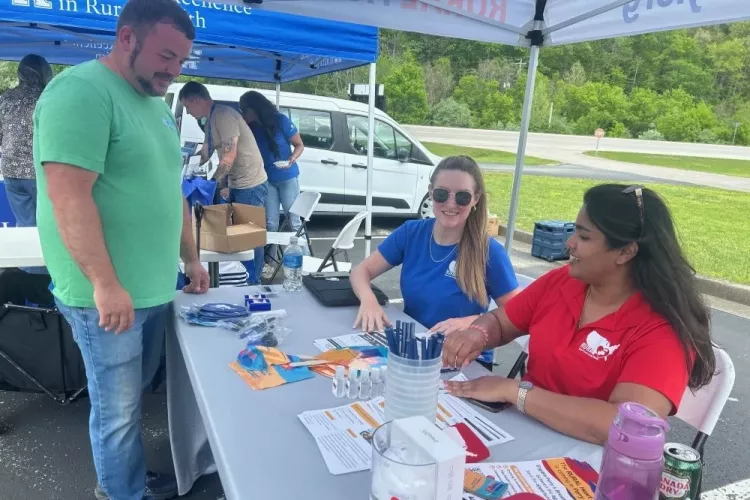Suffrage at 100: Celebrating a century of the 19th Amendment
October 3, 2024August 18, 1920, marked the first major breakthrough in a serious of events that would unleash the voices of women across the nation.
The 19th Amendment passed 100 years ago, allowing women to cast their ballots and have influence in their government for the first time. Despite the historic legislation, it was not until the passing of the Voting Rights Act 45 years later that the right to vote was truly guaranteed to all women regardless of ethnic and economic backgrounds.
Several women who fervently campaigned for these rights solidified their legacy in American history, women like Elizabeth Cady Stanton, Alice Paul, Lucy Stone and Ida B. Wells.
The University of Louisville, including the Women’s Center, the Commission on the Status of Women, the College of Arts and Sciences and more, initially planned a series of events all year long to celebrate women’s suffrage. Unfortunately, however, those plans were canceled due to the COVID-19 pandemic.
Part of their plan was to identify and celebrate our very own trailblazing women – women like President Neeli Bendapudi, UofL’s first non-acting female president; Valerie Combs, the first woman to sign a letter of intent to attend UofL on a basketball scholarship (1976); Toni Ganzel, the first female dean of the School of Medicine; and Katherine Stevenson, the first out transgender woman to hold an administrative role at UofL (executive director of enterprise technology services).
Though that project was cut short, it doesn’t diminish the impact that women affiliated with the University of Louisville have had on our greater community. In fact, the Courier Journal recently published a “Kentucky’s Women of the Century” feature in celebration of the women’s suffrage milestone, and a number of UofL women were included:
- Georgia Davis Powers, for example, was the first African American and first woman elected to the Kentucky Senate. She attended Louisville Municipal College, but received an honorary doctorate degree from UofL.
- Diane Sawyer attended a semester of law school at UofL before turning to journalism.
- Alberta Jones, the first woman to become a prosecutor in Louisville, graduated third in her business class from UofL in 1953.
- Elmer Lucille Allen, the first Black chemist at the Brown-Forman Co., began studying art at UofL in 1981, when she was 50 years old. She received her masters of Creative Arts with a focus in ceramics and fiber in 2002. See more of her story here.
Other women’s milestones at UofL
Interestingly, UofL's enrollment demographics have always tipped the scale in favor of women. In 1907, UofL’s College of Liberal Arts opened on West Broadway, offering more than a dozen departments and admitting “both ladies and gentlemen.” The first graduating class in 1908 was comprised of 10 women and eight men, according to “The University of Louisville” by Dwayne D. Cox and William J. Morison. As of fall 2018, there were 11,706 female students enrolled at UofL, versus 10,765 male students.
Beyond the numbers, much progress has been made in UofL's 200-plus history in regards to women's rights and visibility.
Take, for example, UofL’s first school song, written in 1909, which originally omitted women. It wasn’t until the 1980s, when English Professor Lucy M. Freibert suggested changing the words from “We thy loyal sons now stand” to “We thy sons and daughters stand.” The change was authorized by President Donald Swain, who served in that role from 1981 to 1995.
In 1973, Freibert taught “Women in Literature,” the first women’s studies course given at UofL. Soon, there were courses in other departments.
On Feb. 17, 1975, Betty Friedan, founder of the National Organization for Women, spoke on campus. During that same year, the Women’s Studies Program began in the College of Arts & Sciences. In 1981, the university began offering a minor in women’s studies and, in 1995, UofL became the only Kentucky university and one of only a few in the South to offer a major in this field.
That’s not to say progress has come easily, however. All the way back in 1870, Professor Theophilus Parvin argued that association of the sexes in clinic and classroom worked against “the modesty and delicacy which are so essential to womanly character.” In the 1890s, the school admitted a woman, but “she was promptly hooted out of the lecture hall,” according to recounts from the book, “The University of Louisville."
In 1891, Professor D.W. Yandell asked if women should practice medicine. He didn’t think so. However, in 1905, Estelle Sederberg received her MD from the University of Louisville after transferring from another institution. The first woman to complete the entire UofL medical course was Marie Biehl, in 1923.
In the early 1940s, in the throes of World War II, women outnumbered men on campus two to one. The dean of women, Hilda Threlkeld, said these personnel shortages created new professional opportunities for women, but maintained that the woman’s most important role remained in the home.
As of 1967, women students were not supposed to wear slacks in the classroom or the library.
In 1975, UofL’s football coach Vince Gibson put out a call for female students to join the “Gibson Girls” club, which was designed to “present UofL’s best face to prospective athletes during their recruiting trips to campus.” The women were tasked with giving athletes campus tours and serve as their dates at various functions. FOCUL, a feminist student organization, protested, likening members’ obligations to prostitution. The Gibson Girls eventually folded.
Also in the ’70s, a group of female professors discovered significant salary discrepancies between them and their male counterparts. UofL responded by increasing the salaries of several female professors. However, in 1994, the Task Force on the Status of Women issued a report asserting that female employees were “victims of subtle yet pervasive forms of discrimination” – including pay inequity among administrators and faculty. A commission was created to create a comprehensive salary equity plan and in 1997, $1.1 million in salary adjustments was awarded in the first phase of the commission’s recommendations.
In the late 1980s, Freibert and political science professor Mary E. Hawkesworth began a campaign to establish a women’s center on campus with an objective of “promoting equality, increasing women’s self-reliance and heightening the understanding of women’s contributions to all cultures and societies.” Funds were approved in 1991. The center began operating in 1992 under the direction of Judi Jennings, and marked its 25th anniversary in 2017.
Other relevant UofL milestones in celebration of the 100th anniversary of women's suffrage include:
- Aimee L. Jones was the first female graduate of the Louisville College of Dentistry in 1901, the predecessor of the UofL School of Dentistry. According to a School of Dentistry alumni directory, the first female graduate was Bertha Drake Beazley, from the Class of 1943.
- Almee Courtright was the first woman to receive a law degree from UofL in 1911.
- Margaret Mattingly became the first female graduate of the Speed School of Engineering in 1937.
- The University Women’s Information Network formed on campus in the 1970s.
- In 1983, UofL created a minor in Women’s Studies.
- In 2004, a Master of Arts in Women’s and Gender Studies was created – the first graduate degree available in the field in Kentucky.
- In 1993, The Task Force on the Status of Women was created. In December 1994, the board of trustees approved the creation of the Commission on the Status of Women and in 1995, the first members were appointed.
- In 2018, the first female president of UofL, Dr. Neeli Benadpudi, was named, though it is worth mentioning that Carol Garrison served as acting president in 2002.



